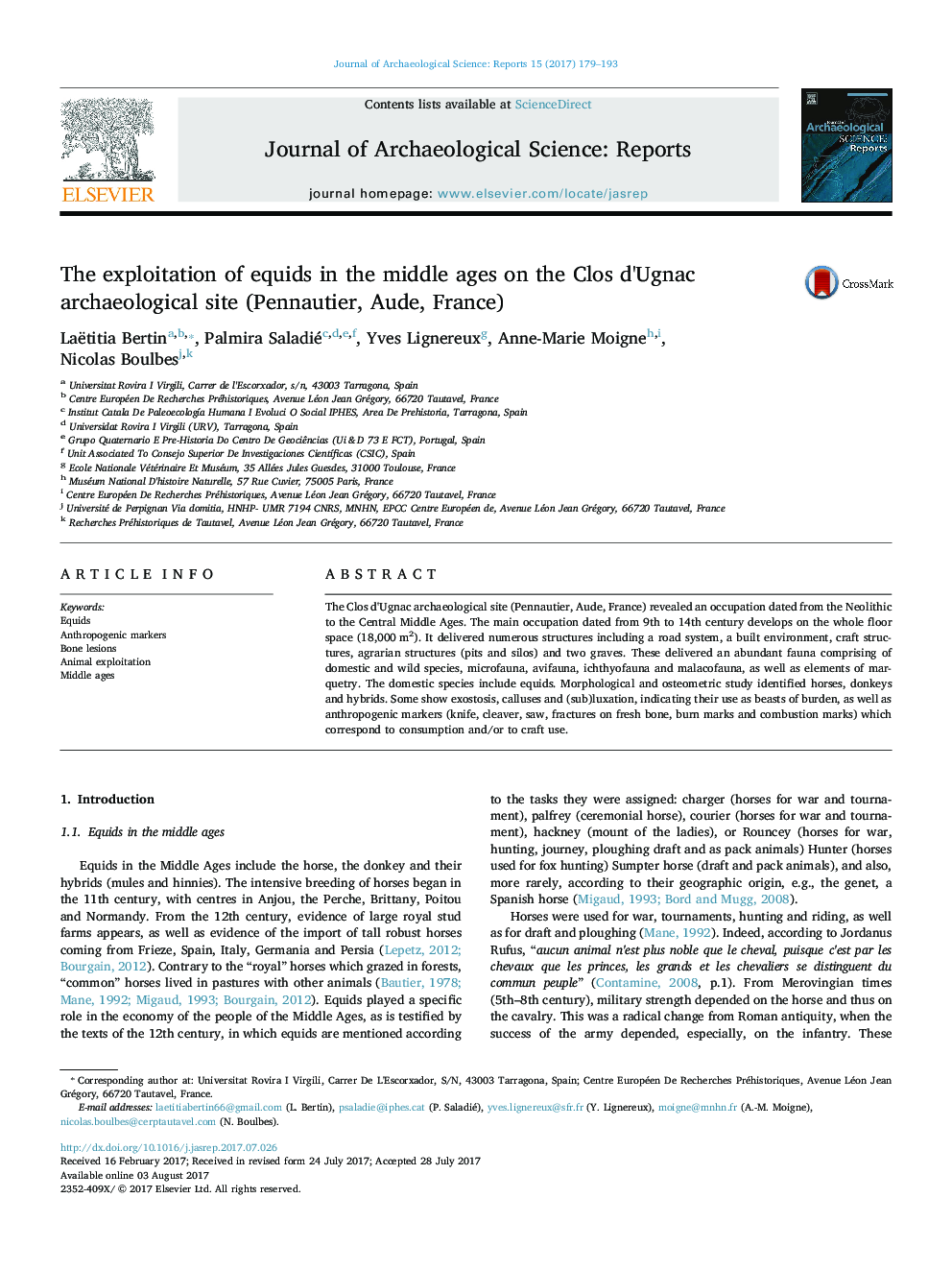| Article ID | Journal | Published Year | Pages | File Type |
|---|---|---|---|---|
| 5112284 | Journal of Archaeological Science: Reports | 2017 | 15 Pages |
Abstract
The Clos d'Ugnac archaeological site (Pennautier, Aude, France) revealed an occupation dated from the Neolithic to the Central Middle Ages. The main occupation dated from 9th to 14th century develops on the whole floor space (18,000Â m2). It delivered numerous structures including a road system, a built environment, craft structures, agrarian structures (pits and silos) and two graves. These delivered an abundant fauna comprising of domestic and wild species, microfauna, avifauna, ichthyofauna and malacofauna, as well as elements of marquetry. The domestic species include equids. Morphological and osteometric study identified horses, donkeys and hybrids. Some show exostosis, calluses and (sub)luxation, indicating their use as beasts of burden, as well as anthropogenic markers (knife, cleaver, saw, fractures on fresh bone, burn marks and combustion marks) which correspond to consumption and/or to craft use.
Related Topics
Social Sciences and Humanities
Arts and Humanities
History
Authors
Laëtitia Bertin, Palmira Saladié, Yves Lignereux, Anne-Marie Moigne, Nicolas Boulbes,
